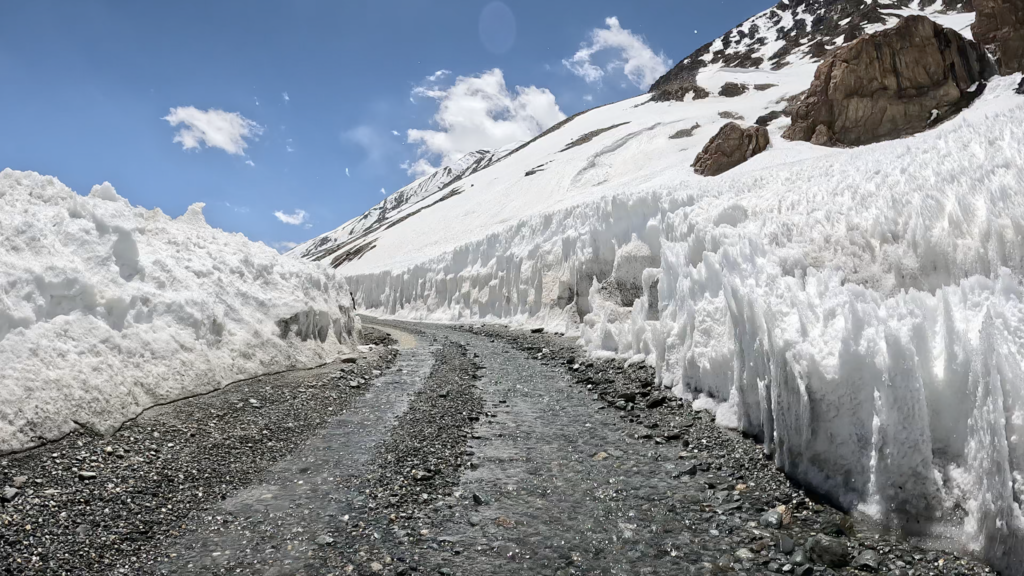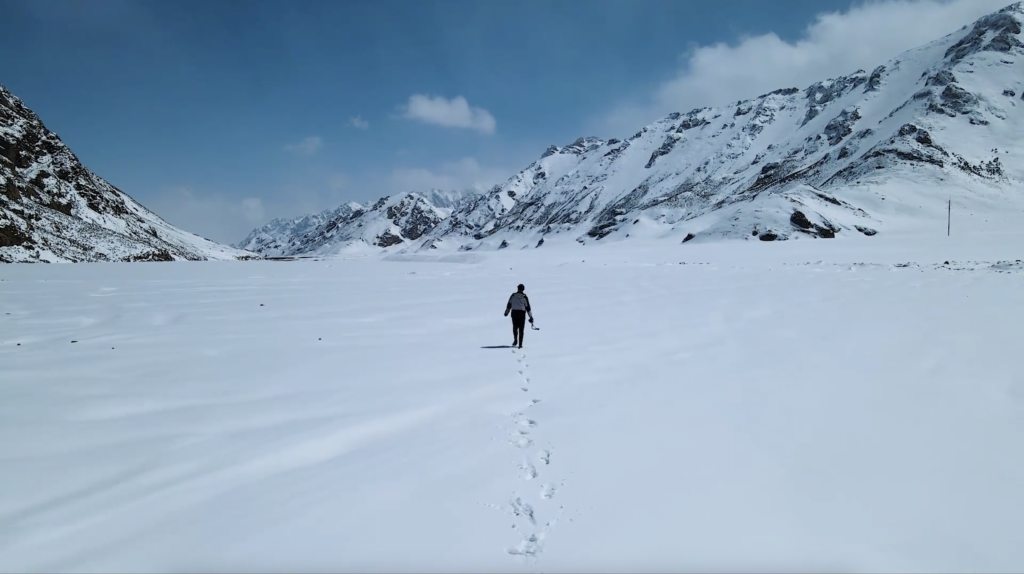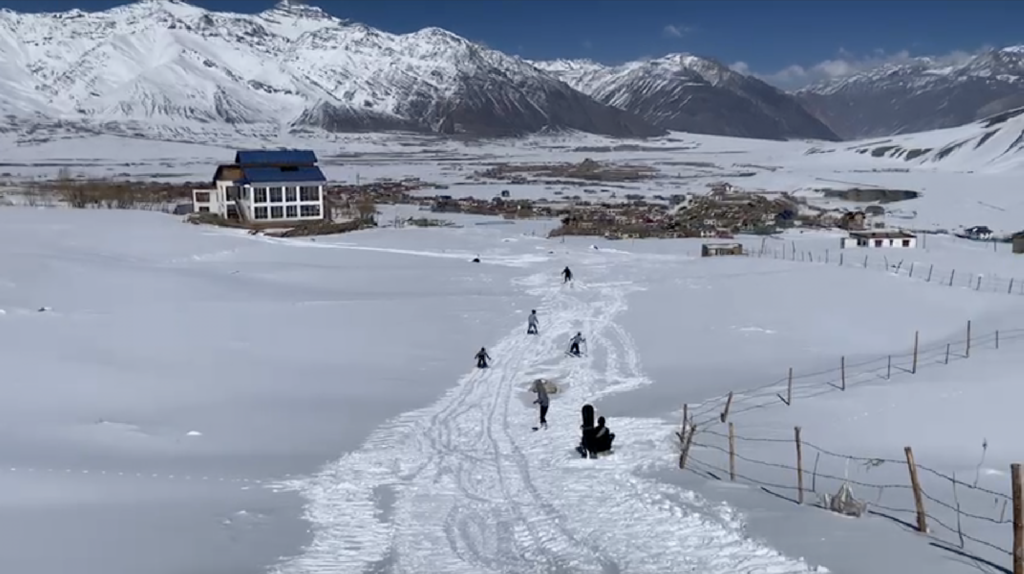Are you thinking of a snowy adventure to Ladakh, Spiti Valley, Zanskar Valley, or Pangi Valley this January? These places turn into magical snowy wonderlands during winter. But visiting them in the cold season needs extra planning and preparation. Let’s go through everything you need to know to make your trip fun, safe, and unforgettable.
Ladakh – Spiti – Zanskar: What’s the weather in January?
January is the coldest month in Ladakh, Spiti Valley, Zanskar, and Pangi Valley. Temperatures can drop to -20°C or even lower at night, and it rarely gets warmer than freezing during the day. Snow is common, covering the ground in sparkling white. It’s beautiful but can make travel tricky. Roads are often icy, which makes driving dangerous if you’re not careful. Heavy snowfall can also block roads, so you need to be ready for delays.
Lakes like Pangong and Tso Moriri freeze completely. They look amazing, with thick ice and snow all around. These frozen lakes are popular with photographers and adventurers who want to see something truly special. But the extreme cold can cause problems for cars, cameras, and even your health, so you have to plan ahead.
If you’re going, pack warm clothes like thermal layers, thick jackets, gloves, and sturdy boots. Bring extra food, water, and something to stay warm in case of emergencies. Power and internet might go out, so be prepared for limited connections. With the right preparation, you can enjoy the quiet, peaceful beauty of these snowy mountains.

Tips for Winter Trip to Ladakh – Spiti – Zanskar Valley
1. Bring Warm Clothes
- Wear thermal underwear, wool jackets, gloves, and thick socks. These will keep you warm even in freezing temperatures.
- A sleeping bag made for very cold weather is a must if your hotel doesn’t have heating.
- Dress in layers so you can adjust to the temperature. Don’t forget a scarf and hat to cover your face and ears.
2. Plan for Closed Roads in Ladakh, Spiti & Zanskar
- Ladakh: Roads from Srinagar and Manali are closed due to snow. Only local roads inside Ladakh are open, but check for updates.
- Spiti Valley: You can only get there through the Shimla-Kaza road, as the Manali-Kaza route is shut.
- Zanskar Valley: You can only access it from Kargil, as other routes are blocked.
- Pangi Valley: Many roads connecting Pangi to nearby areas are unreliable due to snow.
3. Stay Flexible
Snowstorms can delay your plans. Keep extra days in your schedule just in case you get stuck or need to wait for better weather.
4. Carry Cash
ATMs and mobile networks might not work in remote areas. Bring enough cash for food, lodging, and emergencies.
5. Pick Warm Places to Stay
Choose hotels or homestays with heaters. Staying in a cold, unheated place can be uncomfortable and even dangerous. Check reviews or ask locals for advice on where to stay.

Recommendations for Winter Trip
Ladakh
Most roads to Ladakh are closed during winter, but you can still travel between Leh, Nubra Valley, and Pangong Lake. These routes provide breathtaking views of snow-covered mountains and frozen rivers. However, heavy snowfall on high passes like Khardung La or Chang La might block the roads temporarily, so always check the weather before heading out. Hiring local drivers is a great idea as they know how to navigate icy roads safely.
The peaceful atmosphere of winter in Ladakh, with far fewer tourists, makes it an excellent time for those seeking solitude. You can also visit monasteries like Hemis and Thiksey, where the quiet setting allows for deeper cultural experiences. Don’t miss a chance to witness frozen Pangong Lake—a once-in-a-lifetime view.
Spiti Valley
The Shimla-Kaza road remains open during winter, but the journey can be challenging due to icy and slippery patches, especially around Nako and Tabo. Snow chains are absolutely necessary for vehicles. Kibber, one of Spiti’s highest villages, becomes a hub for spotting rare snow leopards, making it a paradise for wildlife enthusiasts.
Villages like Langza and Komic, blanketed in snow, offer picture-perfect settings for photographers and travelers. Walking through these snow-covered hamlets feels like stepping into a fairy tale. Make sure to inform locals or authorities about your travel plans to ensure safety. Homestays provide a cozy stay, where you can experience the warmth of local hospitality.
Zanskar Valley
You can reach Zanskar through Kargil, but it’s essential to plan carefully as the region’s roads are prone to closures during heavy snowfall. The frozen rivers and snow-draped peaks make Zanskar a dream destination for adventure lovers.

The famous Chadar Trek, where you walk on the frozen Zanskar River, is an iconic winter activity here. It’s not for beginners, so only attempt it with experienced guides and proper preparation. Villages like Padum and Zangla offer opportunities to connect with local traditions and enjoy the stunning winter scenery. Be prepared for limited connectivity and basic facilities as the valley becomes very remote in winter.
Pangi Valley
Traveling to Pangi Valley in winter is extremely challenging due to frequent snowstorms and roadblocks. The Sach Pass remains closed, and other routes are often impassable, making summer the ideal time to visit. However, if you’re determined to explore Pangi in winter, detailed planning is essential.
Snow-covered trails and pristine landscapes reward those who make the effort, but you should carry all necessary supplies, including extra food and warm clothing. Staying in local homestays can provide a glimpse into the hardy lifestyles of Pangi’s residents. Always have an emergency plan and keep updated on the weather conditions before attempting this trip.

Staying Safe in the Snow
1. Watch Out for AMS (Altitude Sickness)
High altitudes can cause sickness with headaches and tiredness. Drink water, take it easy, and rest often. If you feel sick, go to a lower altitude quickly.
2. Prepare for Power Cuts
Carry extra batteries and power banks for your phone and flashlight. Power might go out for days in some areas, so have a backup plan.
3. Get Your Vehicle Ready
- Use a 4×4 vehicle with snow chains for icy roads.
- Bring extra fuel, as gas stations might not have enough.
- Pack an emergency kit with blankets, snacks, and a shovel for clearing snow.
Best Things About Visiting Ladakh – Spiti – Zanskar in Winter
- No Crowds: Winter is so quiet that you’ll often feel like you have the entire mountains to yourself. The usual rush of tourists is gone, leaving you with peaceful trails, serene views, and a deep connection to nature. This solitude makes the experience even more magical and personal.
- Frozen Lakes: Witnessing lakes like Pangong and Tso Moriri completely frozen is a sight to behold. These icy wonders sparkle under the sunlight, making them perfect spots for breathtaking photos. In some safe areas, you might even get to skate or walk on the frozen surfaces, adding an adventurous twist to your trip.
- Peaceful Monasteries: Monasteries in winter are especially tranquil. With fewer visitors, you can spend quiet moments meditating or simply soaking in the spiritual vibes. Monks are often more open to sharing stories about their daily lives and the unique challenges of living in such high-altitude places.
- Beautiful Photos: Winter transforms these regions into a photographer’s dream. The snow-covered landscapes and crystal-clear skies offer endless opportunities for stunning pictures. Nighttime brings star-filled skies with views of the Milky Way that are rarely seen elsewhere, perfect for stargazing or astrophotography.
- Local Festivals: Many areas celebrate traditional winter festivals during this time. These events often feature local dances, music, and cultural performances, giving you a rare glimpse into the vibrant traditions of the Himalayan people. Attending one of these festivals can be a heartwarming and enriching experience.
- Wild Animals: Winter is a fantastic time for spotting rare wildlife. In Spiti, for example, you might catch a glimpse of elusive snow leopards or Himalayan wolves. Bird watchers will also enjoy seeing species adapted to the cold, like golden eagles and Himalayan vultures.
- Warm Nights: After spending your day exploring, nothing beats relaxing by a warm stove in a cozy homestay. Sip on hot butter tea or steaming soup as you share stories with locals or fellow travelers. The chilly air outside and the warmth indoors create a perfect end to your adventurous day.

Conclusion
A winter trip to Ladakh, Spiti Valley, Zanskar, or Pangi Valley is an adventure you’ll never forget. These magical destinations transform into snow-covered wonderlands that are both breathtaking and serene. With the right gear and a well-thought-out plan, you can explore stunning snowy landscapes, experience the tranquility of the mountains, and connect with the unique culture of the region.

Imagine walking on frozen lakes, enjoying clear, starry skies, and sipping hot tea by a warm fire after a day of adventure. The quiet beauty of winter offers a rare chance to escape the busy world and truly immerse yourself in nature. While these trips do require preparation and care, the memories you make will be unforgettable. So pack your warm clothes, stay safe, and get ready for an incredible journey into the heart of the Himalayas!


